Where, when and how to drink coffee like an Italian
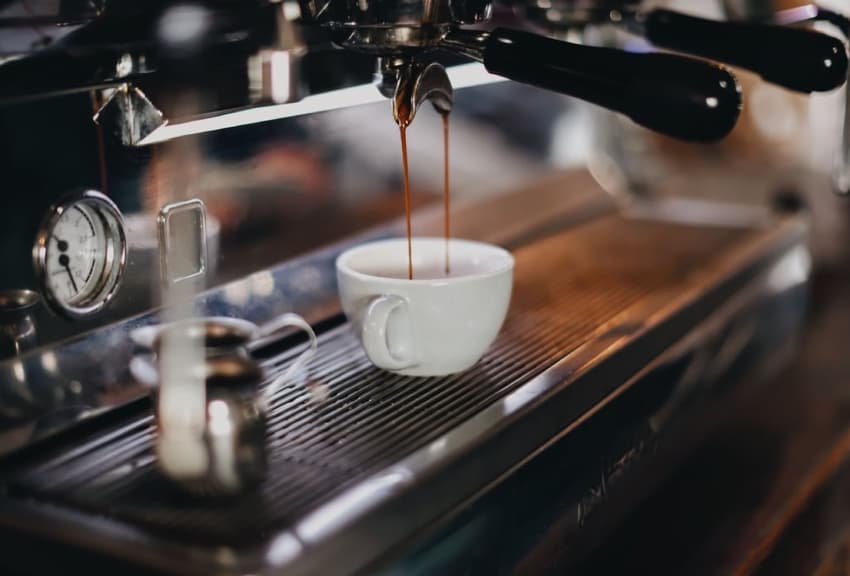
Italy's coffee culture is admired around the world, but it can be hard for the average foreigner to navigate its rules and norms. Here’s what you need to know to get your caffeine fix ‘all’italiana’.
Italians have been consuming coffee since the 16th century, when Venetians started importing the beans from abroad.
But it was in the 20th century that coffee really took off in Italy, with the introduction of the espresso machine to the country in around 1901 and Alfonso Bialetti's invention of the iconic stovetop moka coffee pot in 1933.
Since then, Italy has built up a coffee culture that is admired and imitated across the world; but this rich tradition comes with a set of rules and norms that can sometimes trip up those who are new to the scene.
Here's what you need to know about drinking coffee in Italy like an Italian.
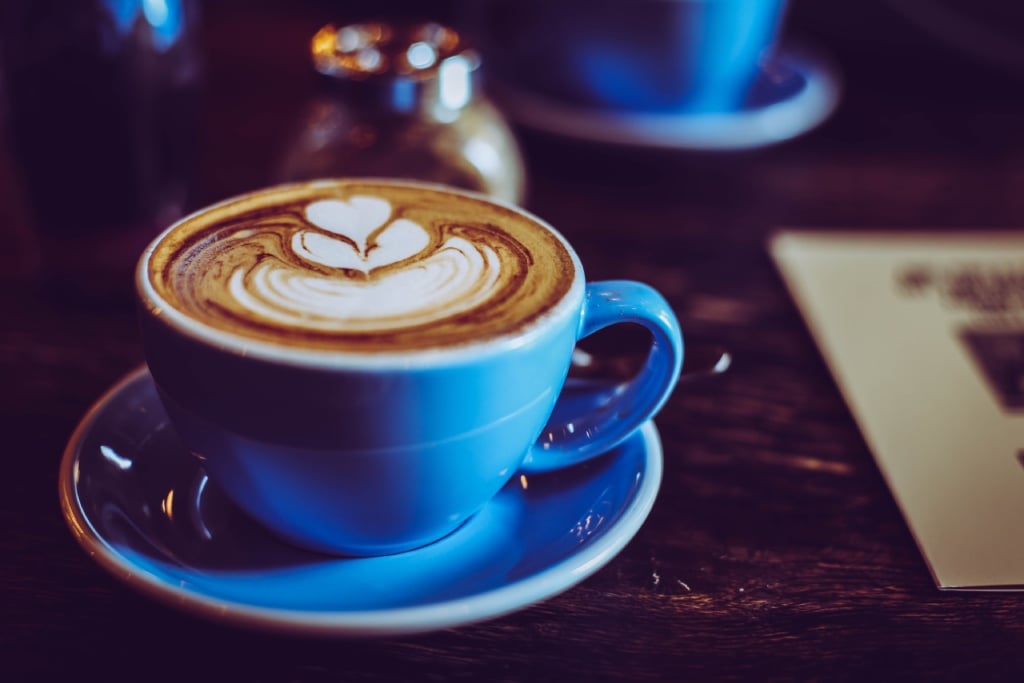
A cocoa-dusted cappuccino. Photo by Laureen Missaire on Unsplash
Italian coffee habits
Coffee is commonly drunk at least three times a day in Italy: at breakfast, after lunch, and after dinner.
Milk coffees like a cappuccino or caffè latte are strictly breakfast drinks to go along with your cornetto or brioche pastry. An Italian who orders one of these drinks after about 10 or 11am would get a very strange look - though foreigners can just about get away with it.
READ ALSO: Italian pastries: Is it a cornetto, croissant or brioche?
That's because milk coffees are so heavy they're seen as almost a meal in their own right. It's a firmly-held belief amongst most Italians that drinking a cappuccino after you've had an actual meal will completely ruin your ability to properly digest it.
At any other time of day, people drink only espresso-style coffees. Because you're drinking no more than a shot's worth, it's to be consumed after rather than alongside your meal, to counteract the soporific effects of a full stomach and give you a little energy kick.
In the evening, and sometimes after lunch, coffee is often drunk with a small amount of alcohol to stop you getting too alert; either added to the coffee itself or brought in its own shot glass.
As much as Italy has a thriving coffee bar scene, a good quantity of coffee-drinking is done at home with a moka caffettiera.
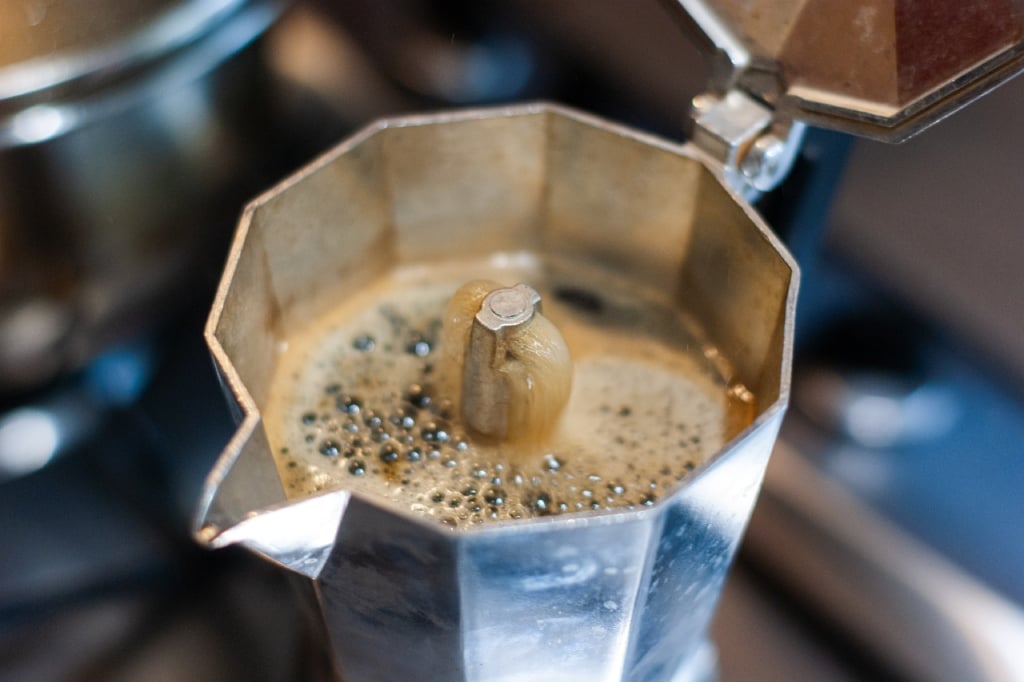
Italian moka coffee pot. Photo by Thanos Amoutzias on Unsplash
This method involves pouring room-temperature water into a little pot that forms the base of the coffee maker; scooping some coffee grounds into a metal cap filled with tiny holes that sits directly on top; sealing the device by screwing on the top part of the caffetteria, which has an empty chamber for the coffee to run into; and turning on the stove.
READ ALSO: How Italy came to be Europe's coffee capital
When the water boils it's slowly forced up through the coffee grounds and into the top half of the pot, giving you a concentrated coffee not far off an espresso.
Some like to heap their coffee grounds in a little mound, while others swear by spreading them flat with the back of a spoon, sometimes poking little holes in with a toothpick.
But everyone agrees on a couple of things: you shouldn't press the grounds in too tight, as this will prevent the water from percolating through; and you should absolutely not wash your coffee maker with soap: the built-up coffee residue is key to the flavour.
Types of coffee
Cappuccino: a cappuccino.
Cappuccino scuro: a ‘dark’ cappuccino, i.e. one with less milk than your average cappuccino. A little extra hot water is added in its place.
Caffè latte: What anglophones think of as a latte – but use the full name here unless you want a glass of milk.
Caffè espresso: espresso…but just say caffè. Get used to the idea that for Italians a coffee is an espresso.
Caffè macchiato: an espresso ‘marked’ with a splash of warmed milk.
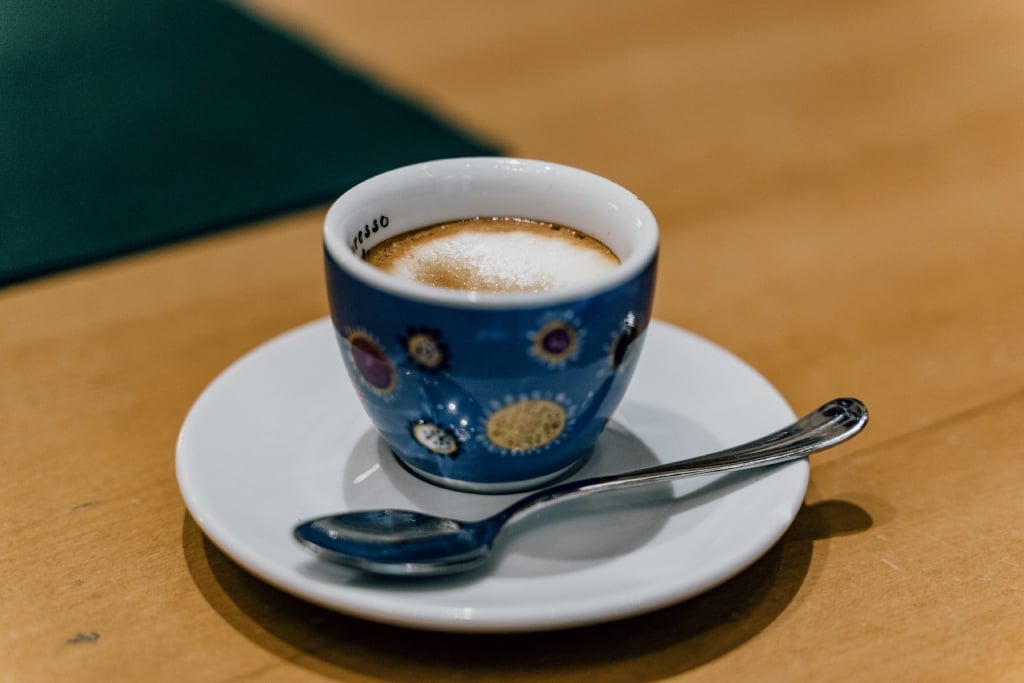
An Italian 'caffe macchiato' with a spoonful of sugar on top. Photo by Gabriella Clare Marino on Unsplash
Caffè ristretto: an espresso with some of the water held back, to give you a shorter shot.
Caffè lungo: an espresso with a little extra water added, to give you a longer shot.
Caffè corretto: an espresso ‘corrected’ with the addition of a shot of grappa or other type of alcohol.
Marocchino: a layered shot of espresso, cocoa powder, and foamed milk, sometimes with the addition of chocolate syrup. Served in a little shot glass so you can admire the pretty layers.
Caffè americano: an americano.
How do I order a coffee?
In many cafes in big cities in particular, you’ll be expected to first pay at the till, then bring your receipt to the person behind the bar and order from them. Watch to see what others are doing, or if the cafe’s quiet, ask a staff member (with hand gestures if necessary) where you should go.
To order an espresso, ask for a caffè; to order a caffè macchiato, use the full name. Bear in mind that in many cases, the anglicised versions of Italian drink names are simply adjectives in Italian and don't mean much by themselves. Caffè latte is milk coffee; remove the caffè and you are just asking for milk, which is what you’ll get.
Note the accent in the 'è' at the end of caffè, which tells you that the emphasis should be on the second syllable. It's pronounced 'caff-EH'.
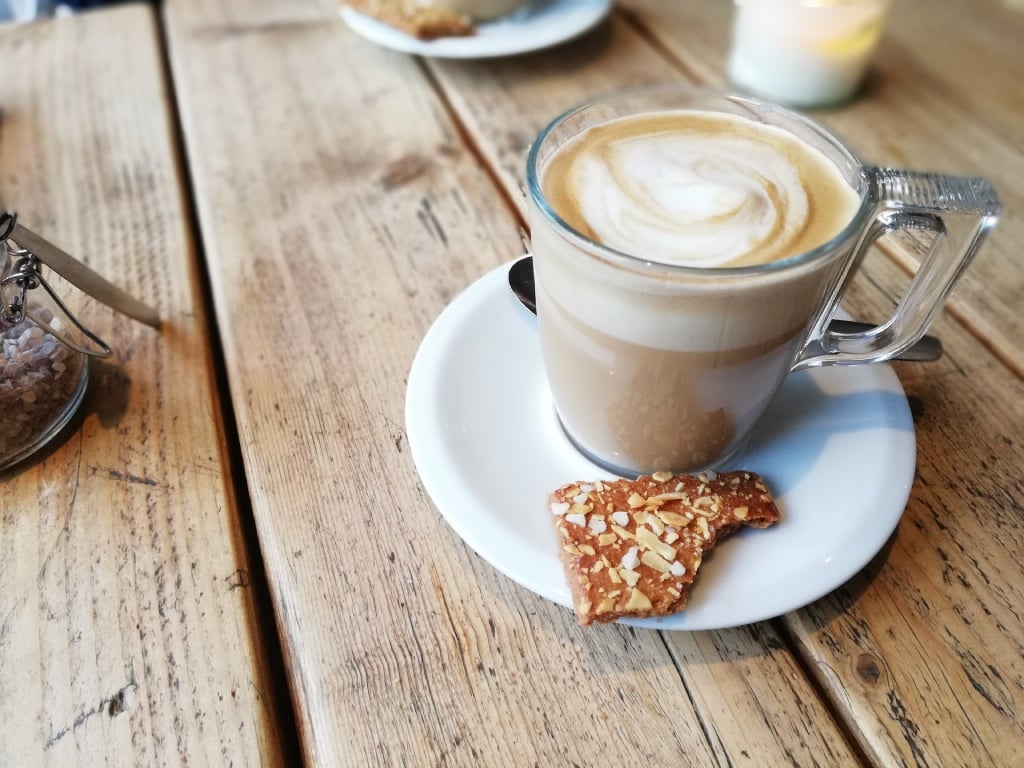
Italian coffee is a one size-fits-all situation: if you order a cappuccino, you'll get a cappuccino, without being asked what size you want. The only exception is if you're at an airport or large train station, but even there, your options will be small, medium, or large; ask for a venti and the barista will have no idea what you're on about.
While in the past takeaway coffee was almost unheard of, these days it’s a well established concept, and bars in even small towns and villages will more likely than not stock takeaway cups.
Many Italians drink their coffee al banco, or at the bar, especially if they’re grabbing a quick post-lunch caffè.
If you see a list of drinks and corresponding prices hanging up near the till, bear in mind that those are likely to be the prices for drinking at the bar; sitting down at a table will cost you extra. In especially touristy places, it’s worth double checking the price of a sit-down coffee before ordering.
READ ALSO: Four myths about ‘traditional’ Italian food you can stop believing
Coffee is considered a basic human need in Italy that everyone should have met – hence the tradition of the caffè sospeso, started in Naples. Homeless people will often ask you for a euro for a coffee, knowing that this, of all requests, is the one most likely to touch a stranger’s heart.
For that reason, you shouldn’t expect to pay much for coffee; around €1 for an espresso and between €1 and €1.50 for a cappuccino is standard, though it’s not uncommon to see prices as high as €3.50 if you’re sitting down in a city’s main piazza right in front the Duomo.
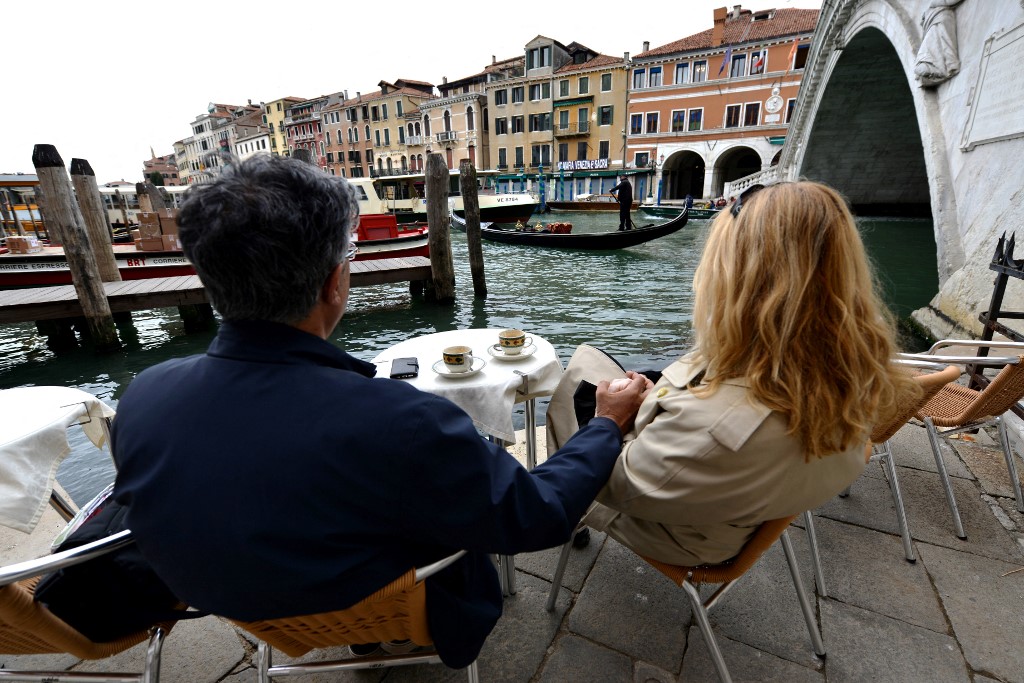
The price of a coffee in Italy is higher if you drink it at a table. Photo by Andrea PATTARO / AFP
Regional variants
As with everything in Italy, each region - sometimes, each city or small town - has its own way of doing things. Here are a few variations on standard Italian coffee you can expect to find in some regions.
Bicerin (Piedmont): a layered drink of hot espresso and drinking chocolate topped with heavy cream, dating back to the 18th century, from the Piedmont capital of Turin. Bicerin in Piemontese means 'small glass', which is what the drink is served in.
Espressino (Puglia): a drink that is equal parts of espresso and milk, with some cocoa powder or Nutella on the bottom of the cup and a dusting of cocoa on top of the drink. Not dissimilar to a marocchino.
Caffè padovano (Padua, Veneto): cream, milk and mint syrup are whipped together and poured over hot espresso in a cappuccino cup, then sprinkled with cocoa powder, in this Padua classic.
Caffè alla valdostana (Val d'Aosta): coffee, sugar, orange and lemon peel, cloves, cinnamon, grappa and Genepì, a local juniper-based liqueur, are mixed together in a walnut or oak wood lidded 'friendship bowl' with multiple spouts; the bowl is passed around the table clockwise and everyone takes a sip.
Caffè leccese (Lecce, Puglia): a drink of ice, espresso, and almond milk. This variant came into being many years ago in the city of Lecce. Back then Italians had no way of storing ice in their own home, so would go to the cafe for a refreshing drink. Shards of ice would be hacked from a big block right before going in the cup.
Comments (2)
See Also
Italians have been consuming coffee since the 16th century, when Venetians started importing the beans from abroad.
But it was in the 20th century that coffee really took off in Italy, with the introduction of the espresso machine to the country in around 1901 and Alfonso Bialetti's invention of the iconic stovetop moka coffee pot in 1933.
Since then, Italy has built up a coffee culture that is admired and imitated across the world; but this rich tradition comes with a set of rules and norms that can sometimes trip up those who are new to the scene.
Here's what you need to know about drinking coffee in Italy like an Italian.

Italian coffee habits
Coffee is commonly drunk at least three times a day in Italy: at breakfast, after lunch, and after dinner.
Milk coffees like a cappuccino or caffè latte are strictly breakfast drinks to go along with your cornetto or brioche pastry. An Italian who orders one of these drinks after about 10 or 11am would get a very strange look - though foreigners can just about get away with it.
READ ALSO: Italian pastries: Is it a cornetto, croissant or brioche?
That's because milk coffees are so heavy they're seen as almost a meal in their own right. It's a firmly-held belief amongst most Italians that drinking a cappuccino after you've had an actual meal will completely ruin your ability to properly digest it.
At any other time of day, people drink only espresso-style coffees. Because you're drinking no more than a shot's worth, it's to be consumed after rather than alongside your meal, to counteract the soporific effects of a full stomach and give you a little energy kick.
In the evening, and sometimes after lunch, coffee is often drunk with a small amount of alcohol to stop you getting too alert; either added to the coffee itself or brought in its own shot glass.
As much as Italy has a thriving coffee bar scene, a good quantity of coffee-drinking is done at home with a moka caffettiera.

This method involves pouring room-temperature water into a little pot that forms the base of the coffee maker; scooping some coffee grounds into a metal cap filled with tiny holes that sits directly on top; sealing the device by screwing on the top part of the caffetteria, which has an empty chamber for the coffee to run into; and turning on the stove.
READ ALSO: How Italy came to be Europe's coffee capital
When the water boils it's slowly forced up through the coffee grounds and into the top half of the pot, giving you a concentrated coffee not far off an espresso.
Some like to heap their coffee grounds in a little mound, while others swear by spreading them flat with the back of a spoon, sometimes poking little holes in with a toothpick.
But everyone agrees on a couple of things: you shouldn't press the grounds in too tight, as this will prevent the water from percolating through; and you should absolutely not wash your coffee maker with soap: the built-up coffee residue is key to the flavour.
Types of coffee
Cappuccino: a cappuccino.
Cappuccino scuro: a ‘dark’ cappuccino, i.e. one with less milk than your average cappuccino. A little extra hot water is added in its place.
Caffè latte: What anglophones think of as a latte – but use the full name here unless you want a glass of milk.
Caffè espresso: espresso…but just say caffè. Get used to the idea that for Italians a coffee is an espresso.
Caffè macchiato: an espresso ‘marked’ with a splash of warmed milk.

Caffè ristretto: an espresso with some of the water held back, to give you a shorter shot.
Caffè lungo: an espresso with a little extra water added, to give you a longer shot.
Caffè corretto: an espresso ‘corrected’ with the addition of a shot of grappa or other type of alcohol.
Marocchino: a layered shot of espresso, cocoa powder, and foamed milk, sometimes with the addition of chocolate syrup. Served in a little shot glass so you can admire the pretty layers.
Caffè americano: an americano.
How do I order a coffee?
In many cafes in big cities in particular, you’ll be expected to first pay at the till, then bring your receipt to the person behind the bar and order from them. Watch to see what others are doing, or if the cafe’s quiet, ask a staff member (with hand gestures if necessary) where you should go.
To order an espresso, ask for a caffè; to order a caffè macchiato, use the full name. Bear in mind that in many cases, the anglicised versions of Italian drink names are simply adjectives in Italian and don't mean much by themselves. Caffè latte is milk coffee; remove the caffè and you are just asking for milk, which is what you’ll get.
Note the accent in the 'è' at the end of caffè, which tells you that the emphasis should be on the second syllable. It's pronounced 'caff-EH'.

Italian coffee is a one size-fits-all situation: if you order a cappuccino, you'll get a cappuccino, without being asked what size you want. The only exception is if you're at an airport or large train station, but even there, your options will be small, medium, or large; ask for a venti and the barista will have no idea what you're on about.
While in the past takeaway coffee was almost unheard of, these days it’s a well established concept, and bars in even small towns and villages will more likely than not stock takeaway cups.
Many Italians drink their coffee al banco, or at the bar, especially if they’re grabbing a quick post-lunch caffè.
If you see a list of drinks and corresponding prices hanging up near the till, bear in mind that those are likely to be the prices for drinking at the bar; sitting down at a table will cost you extra. In especially touristy places, it’s worth double checking the price of a sit-down coffee before ordering.
READ ALSO: Four myths about ‘traditional’ Italian food you can stop believing
Coffee is considered a basic human need in Italy that everyone should have met – hence the tradition of the caffè sospeso, started in Naples. Homeless people will often ask you for a euro for a coffee, knowing that this, of all requests, is the one most likely to touch a stranger’s heart.
For that reason, you shouldn’t expect to pay much for coffee; around €1 for an espresso and between €1 and €1.50 for a cappuccino is standard, though it’s not uncommon to see prices as high as €3.50 if you’re sitting down in a city’s main piazza right in front the Duomo.

Regional variants
As with everything in Italy, each region - sometimes, each city or small town - has its own way of doing things. Here are a few variations on standard Italian coffee you can expect to find in some regions.
Bicerin (Piedmont): a layered drink of hot espresso and drinking chocolate topped with heavy cream, dating back to the 18th century, from the Piedmont capital of Turin. Bicerin in Piemontese means 'small glass', which is what the drink is served in.
Espressino (Puglia): a drink that is equal parts of espresso and milk, with some cocoa powder or Nutella on the bottom of the cup and a dusting of cocoa on top of the drink. Not dissimilar to a marocchino.
Caffè padovano (Padua, Veneto): cream, milk and mint syrup are whipped together and poured over hot espresso in a cappuccino cup, then sprinkled with cocoa powder, in this Padua classic.
Caffè alla valdostana (Val d'Aosta): coffee, sugar, orange and lemon peel, cloves, cinnamon, grappa and Genepì, a local juniper-based liqueur, are mixed together in a walnut or oak wood lidded 'friendship bowl' with multiple spouts; the bowl is passed around the table clockwise and everyone takes a sip.
Caffè leccese (Lecce, Puglia): a drink of ice, espresso, and almond milk. This variant came into being many years ago in the city of Lecce. Back then Italians had no way of storing ice in their own home, so would go to the cafe for a refreshing drink. Shards of ice would be hacked from a big block right before going in the cup.
Join the conversation in our comments section below. Share your own views and experience and if you have a question or suggestion for our journalists then email us at [email protected].
Please keep comments civil, constructive and on topic – and make sure to read our terms of use before getting involved.
Please log in here to leave a comment.